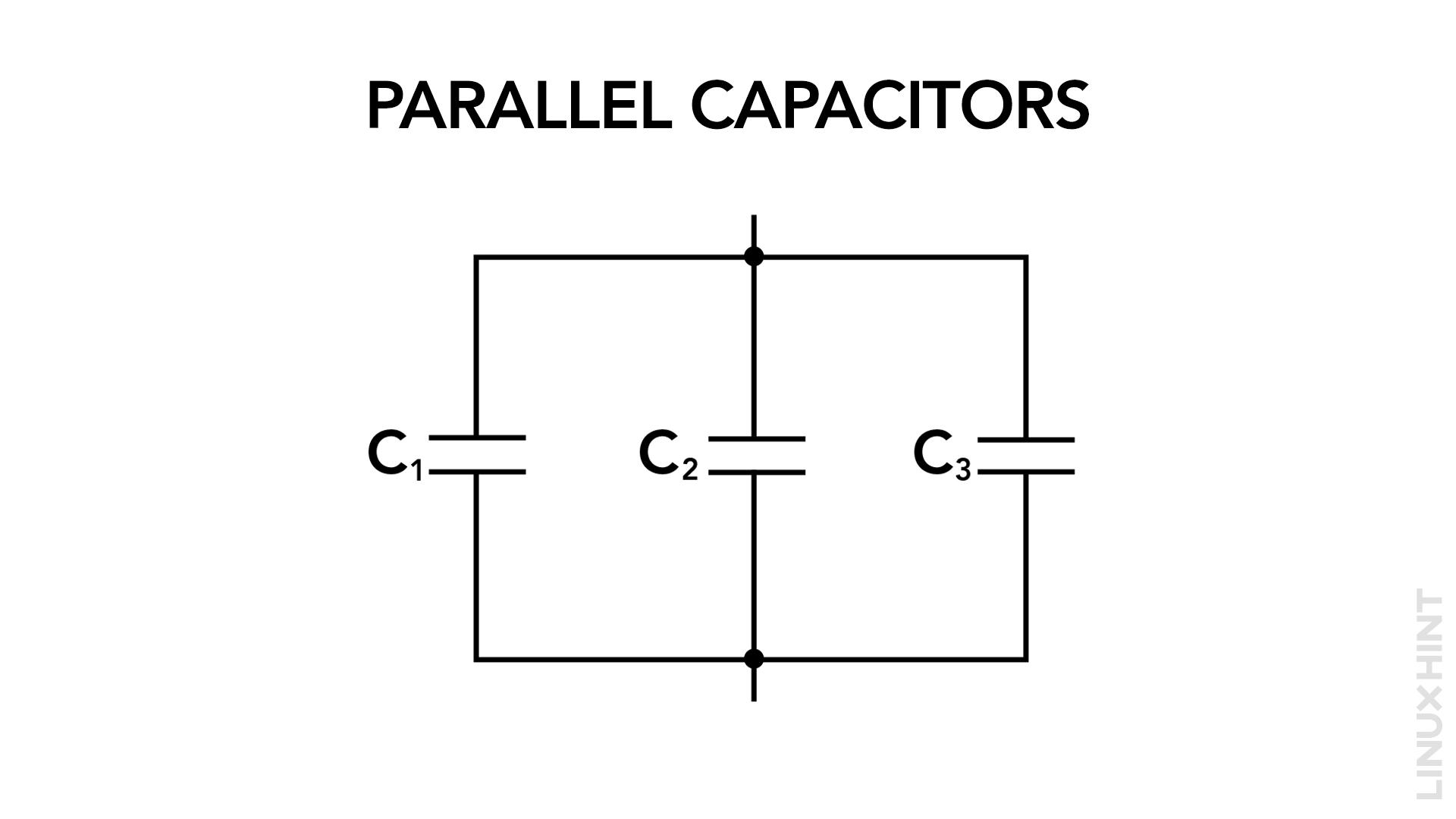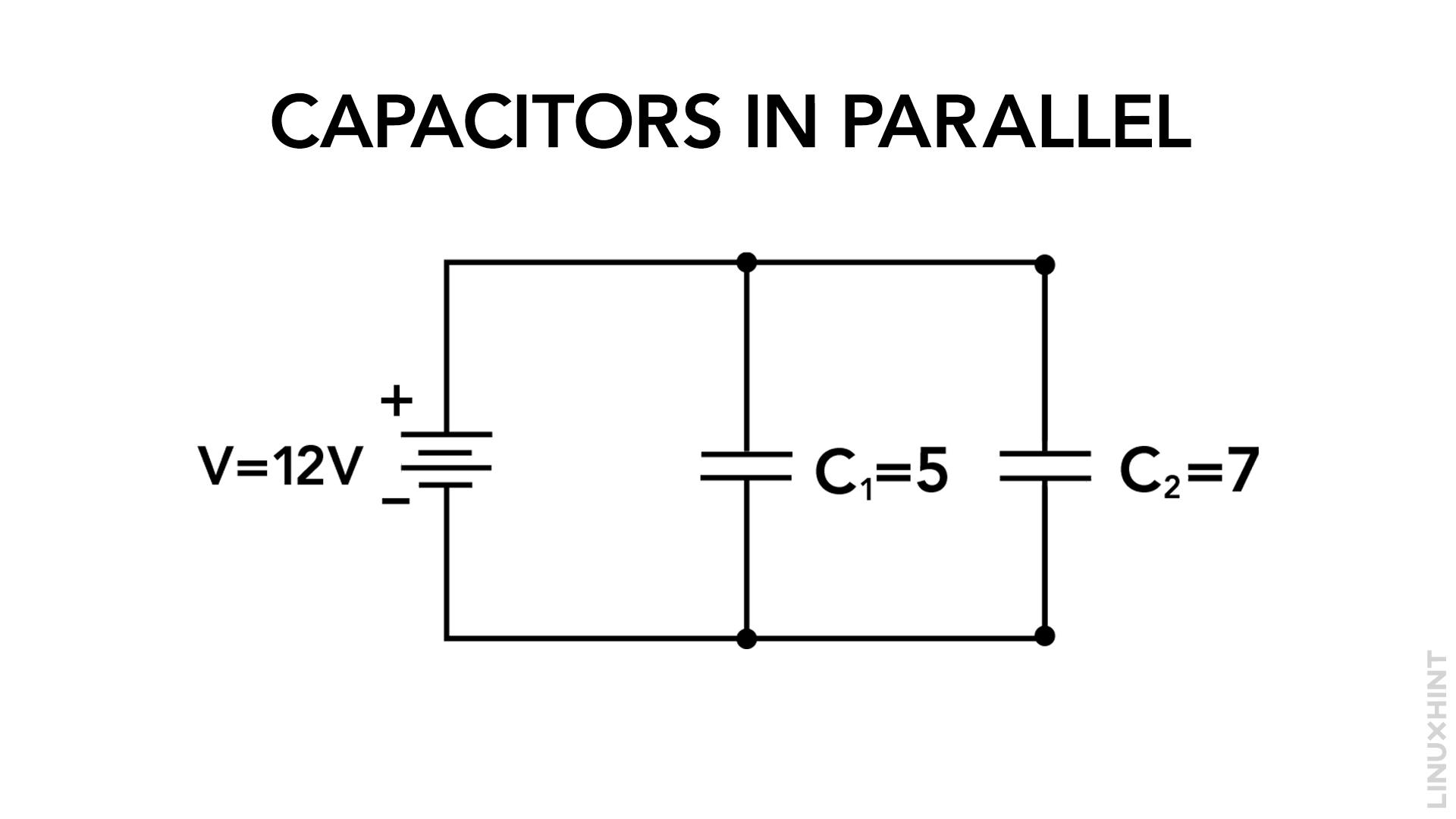Capacitors in Parallel
Capacitors in parallel mean that all capacitors are connected at common first and last terminals points in an electrical circuit. The voltage across every capacitor in parallel arrangement is the same, but current passing through every capacitor is different, as in the case with resistors in parallel arrangement. Parallel arrangement of capacitors C1, C2 & C3 is shown below:

Equivalent Capacitance of Parallel capacitors
Equivalent capacitance means a single equivalent value of capacitor that would have the same effect as all the capacitors in the circuit.
In parallel arrangement, the charges stored on positive plates of capacitors are all interconnected at a common point, while the charges stored on negative plates of capacitors are all interconnected. Therefore, an equivalent capacitor would be the addition of all these capacitors with one large positive & one negative plate.
Voltage Distribution across Parallel Capacitors
The voltage drops across capacitors C1, C2 and C3 in parallel is expressed as:
Current Distribution across Parallel Capacitors
The charge stored on capacitor plates is proportional to the voltage across its terminals:
Also, current is time rate of change of charge given by:
Substituting for q=CV:
Using multiplicative law:
However, ‘C’ is capacitance, and it is constant value:
Considering a two-branch parallel network with two capacitors Ca and Cb:
But Va=Vb=Veq;
Where Ceq= Ca+ Cb
Hence, total current can be evaluated by multiplying equivalent capacitance with the rate of change of supply voltage.
Example
Calculate equivalent capacitance of two parallel capacitors with 5µf, and 7µf. Since capacitors are in parallel, the equivalent capacitance will be the sum of individual capacitance of each capacitor.
Conclusion
Capacitors in parallel networks have the same voltage across them, while the current flowing is a multiple of equivalent capacitance with the rate of change of voltage. The equivalent capacitance of capacitors linked in parallel is calculated by summing the individual capacitance of each capacitor in the circuit.












